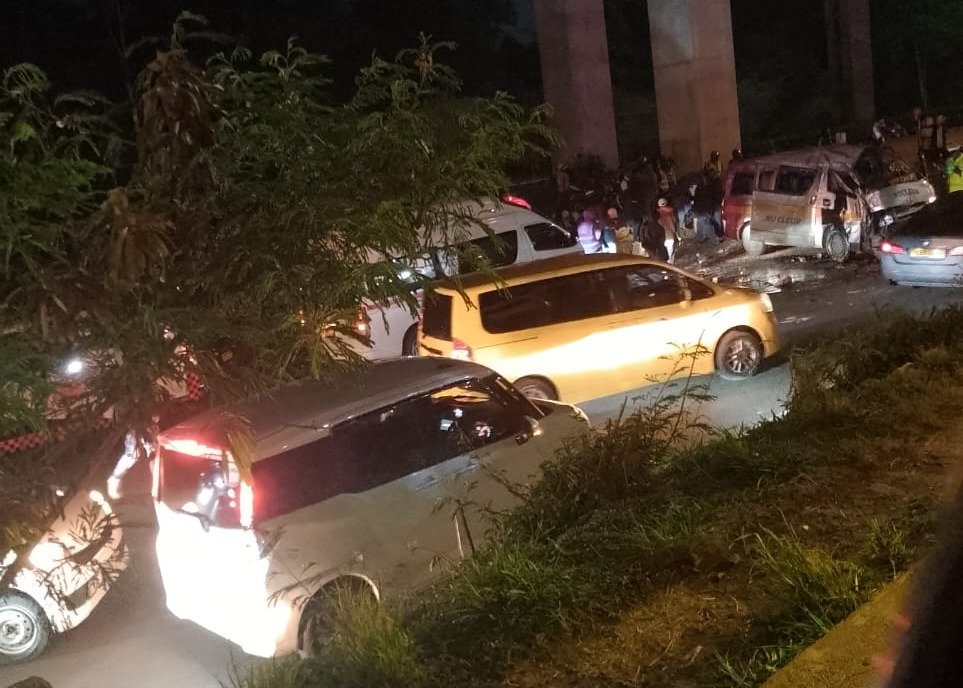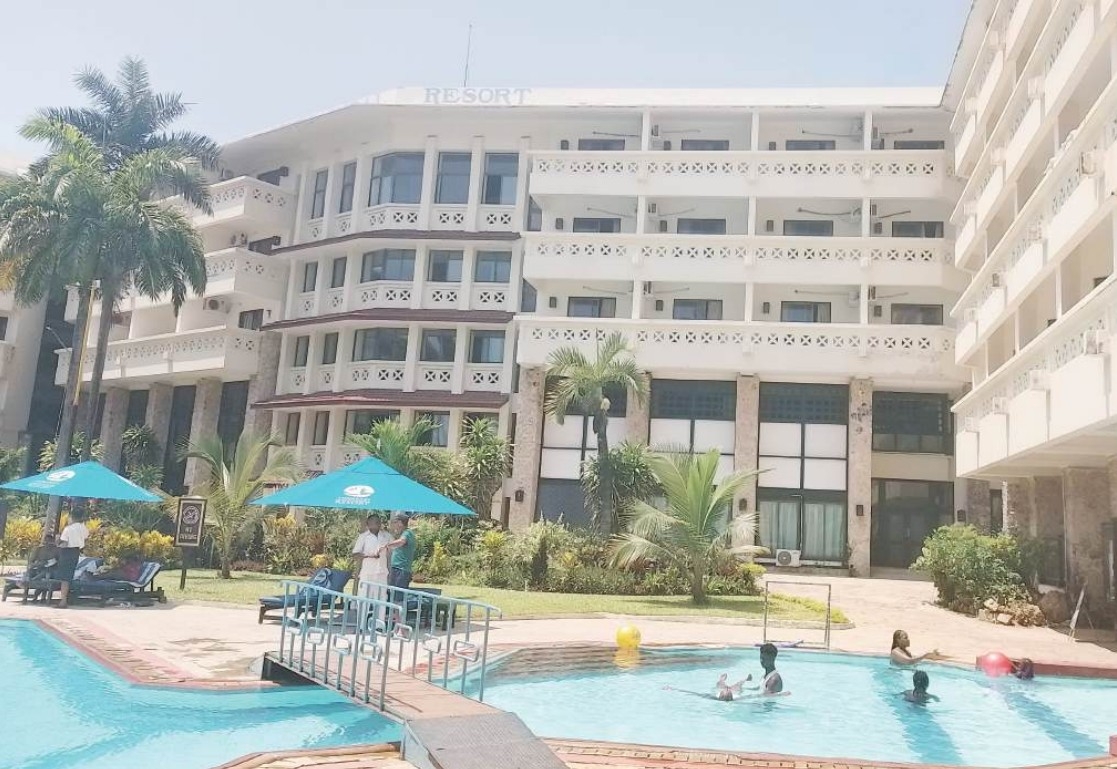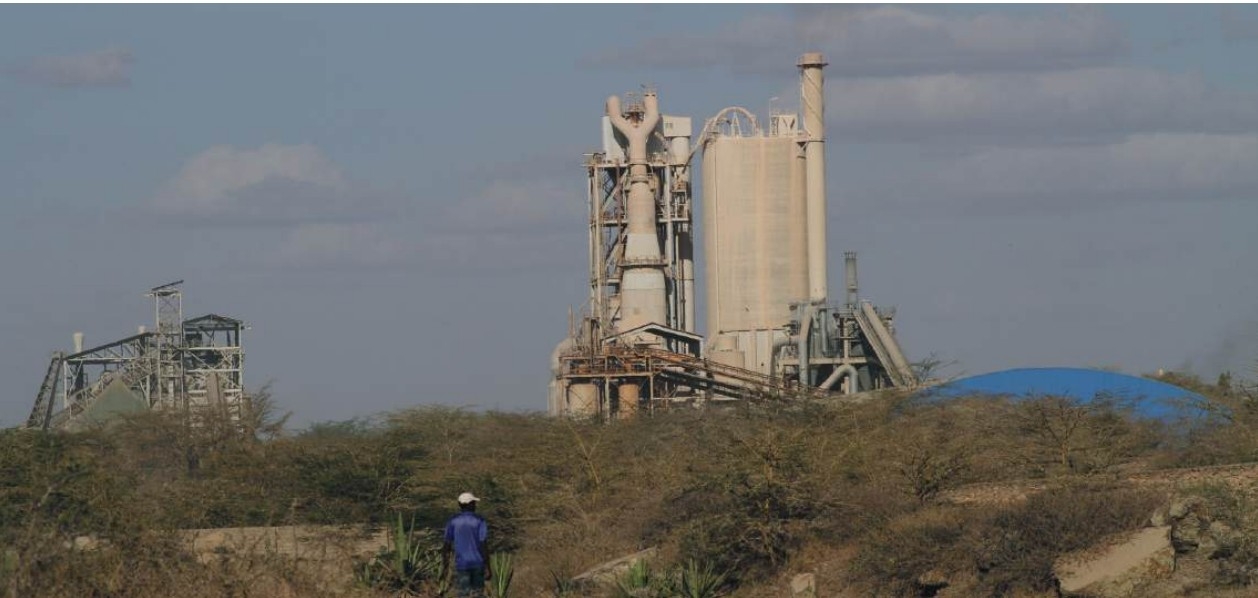While society sneers at used plastics, discarded mosquito nets, scratch cards, electronic waste and sisal sacks, Anthony Muya recycles them.
The visual artist collects them from around settlements and markets and turns them into art.
Muya, who works under the name Amuya Creative Art, started his career in 1994. His aim was to rehabilitate the environment by recycling waste materials and bringing them back to life to create mosaics and collages.
Over the years, the world has become increasingly polluted by non-recycled or non-biodegradable waste materials.
This has prompted nations and activists to call for action against environmental pollution, resulting in adverse changes to our climate and weather patterns.
The production of plastic has increased as industries strive to package their products in a manner appealing to their growing consumer base. Consequently, this surge has endangered our marine life.
Most countries don’t have an effective way of disposing of electronic waste, ranging from old computers, television sets, radios and calculators. These materials do not decompose when discarded at dumping sites.
Muya recognises that the burning of e-waste materials leads to significant carbon emissions and the release of various toxic pollutants, contributing to global warming and climate change, environmental degradation and severe health risks for humans.
The Star met with Muya at his studio in Maringo Estate, Nairobi. We talked about his journey as an artist, his creative process, the drive to combat climate change and how he’s trying to influence the next generation of creative young minds.
Just like every artist, Muya says every art piece is unique and original, and something that is original cannot be mass-produced.
Did you go to school to study art, or is yours a talent?
It all started when I was still in primary school. I did take part in art and craft classes, and when everyone came across my drawings and sketches, they were amazed.
I can say it was inborn, but along the way, I have tried to learn from other people. Every artist or painter is different, so I pick a bit of something from each of them. In college, I did a course on construction, and the sketches were more technical. I also did a lot of freehand, which refined my art.
Where do you draw your inspiration from?
My inspiration comes from the environment and anything surrounding me at that particular time. Since I started my career, things have changed over time. Every day is a learning experience. What I did back then is different now.
Art involves showcasing, teaching and conveying information about the challenges people face daily, while also proposing solutions.
The environment is essential to life, and my method of conserving it involves recycling the waste materials that end up in our neighbourhoods, along sidewalks and in playgrounds.
Different materials inspire me in their own way. It can be a scratch card, a plastic bottle, waste mosquito nets, parts of a discarded radio or a television.
Which materials do you find the most challenging to work with?
To be honest, I find e-waste to be the most challenging material to work with. It's difficult to shape it into a design or something recognisable so that when someone views the end-product, they can understand its significance without explanation.
Secondly, it's about how to stick them together using glue so they remain there permanently. This ensures they don't break during transportation.
How do you ensure the durability and longevity of your art?
Preserving them is a difficult task. For future use or for displaying them in another exhibition, I have to ensure they are free from dust, which is in the air and water. Therefore, the room must not leak, especially during the rain.
I wrap them in a sack, similar to the ones I have hung against the wall.
How does your art contribute to environmental awareness and sustainability?
When people see the end result of what I do, they are impressed and appreciate the change I’m making in the community. Seeing an item transform from waste into a beautiful art piece makes them happier and motivates me to continue my work, which is one of my purposes.
In regards to sustainability, eliminating waste through recycling and reducing pollution helps support the well-being of our people and future generations.
How has your work impacted your immediate neighbours?
They used to be skeptical, but their attitude has changed over time. Sometimes, they stop me along the way and say, "We have something we kept that you could use."
This acts as a source of income for them. At the end of the day, everyone benefits. This also helps them keep their environment clean.
Have you collaborated with any organisations in protecting the environment?
Yes, but their response was disappointing. There is no commitment from government institutions that recognises the long-term importance of what we do.
For example, they offered me a space to exhibit during Environment Day last year, and that was the extent of their support.
I tried to follow up with one of the officials from the said environmental body, but it didn’t bear any fruit. It died.
I feel they don't fully recognise the impact of art in addressing environmental issues, and at times, it seems like we're an inconvenience to them.
In addition, an international organisation with an office in Nairobi approached me after coming across my artwork. We talked at length, and I shared some pictures of my art pieces.
After a few months, they featured my work in their magazine.
I found this to be disrespectful because they had not informed me what they were planning to do.
Everything I do is aimed at being seen, which is why I engage with everyone who expresses interest in my work. Someone hijacking your work and publishing it without your knowledge is something I don’t agree with.
The environment is essential to life, and my method of conserving it involves recycling the waste materials that end up in our neighbourhoods, along sidewalks and in playgrounds
What are the challenges you face working with waste materials in general?
Shortage of materials. At the moment, everyone is collecting plastics for recycling, which is good, but there are times when you need something specific to complete an ongoing project, and suddenly it's scarce.
Furthermore, repair shops now rarely throw or give away parts that they don’t use anymore. I think they realised they could benefit, so most times I end up buying the materials I need.
Any engaging interactions you’ve had with art collectors or enthusiasts during exhibitions?
Yes, I have. A certain Belgian woman asked about a specific artwork, and I explained it to her. It's as if she wasn't very enthusiastic about it or didn't fully grasp my concept.
Before the end of the day, someone was impressed and purchased the pieces.
The same lady who had passed by earlier came back and inquired about the pieces that she had left. After explaining to her that I had sold them to a different person, she looked disappointed.
Which artists have inspired you?
I look up to many artists, most from centuries ago, like French painter Paul Cézanne, Michelangelo, Van Gogh, Salvador Dali, Paul Gauguin and Claude Monet.
I've read about them, their work, their upbringing and what influenced their paintings. When he was alive, Cézanne didn't sell many of his paintings. They were not appreciated. However, after he died, fellow painters, including Picasso and Henri Matisse, purchased his work.
As you go about collecting waste materials, how do you protect yourself?
My health comes first, so I’m always careful and apply certain measures. I normally use gloves because you can’t be sure who came in contact with certain items. Some people might be sick, and the environment in which I picked the items is never clean.
Back in my studio, I wear an apron and sanitise every item I have before using it. So far, I can say I haven’t had any health problems that I can associate with the work I do.
Tell me about your project in Mathare.
I usually engage with not only kids but anyone interested, even adults. My aim is to teach them about art and emphasise its importance for environmental conservation.
This helps me enlighten society on how we can turn waste materials into something beautiful that an ordinary person wouldn’t have thought of.
I think in future, recharging airtime from scratch cards will be a thing of the past. Everything will be digital.
The coming generations will appreciate art pieces made from discarded scratch cards because it’s something that won’t be available at that time.
Art preserves and tells stories of who we are, where we came from and how we can impact the world we live in.
Apart from Kenya, in which other country have you exhibited?
I have had the opportunity to exhibit in countries like Germany, France, Philadelphia and San Francisco. I didn’t appear in person at all the exhibitions, but still presented my work. This also presents a challenge for most artists.
Most con artists disguise themselves as genuine exhibitors and promise artists an international platform to showcase their work, but instead, they use that opportunity to steal the artworks and sell them without the artists' knowledge.
What’s the most expensive art work you’ve sold?
A Ghanaian citizen bought a collage titled 'A Mother's Burden' for Sh450,000.
In conclusion.
I feel like there’s a lot of bureaucracy and black-man supremacy in most government institutions, and that’s what's killing our economy. Art is a unique skill.
As an artist, why do I need a certificate? Government events don’t ask musicians or DJs for certificates when contracting them to perform.
In addition, I would like to encourage organisations, when they do renovations on their premises, to look out for people like us.















